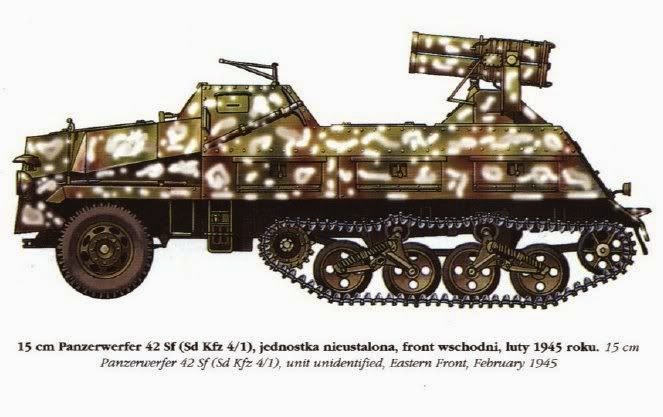The first winter of the war in the USSR (1941-2) demonstrated to the German army that most of its wheeled transport was completely unable to deal with the dreadful muddy conditions produced during the freeze-thaw weather that marked the beginning and end of the Russian winter. During these conditions it was only the halftracks that could make any headway, but to divert the precious halftracks from their operational purposes to carry out the mundane day-to-day supply functions was obviously uneconomic, so it was decided to produce low-cost halftrack trucks. This was done quite simply by taking Opel and Daimler-Benz trucks from the production lines and removing their rear axles. In their place went new dnveshafts connected to tracked assemblies made from PzKpfw II running wheels and tracks. In itself this was a considerable economic advantage since the PzKpfw II was then going out of production and existing capacity could be retained, making the truck conversion an even more cost-effective venture.
The new halftrack trucks were provided with the name Maultier (mule). In the end the conversions used mainly Opel Typ S/SSM trucks, and in service they were generally a success although they tended to lack the overall mobility of the 'proper' halftracks. Not surprisingly, their use was confined to the Eastern Front, and the vehicles were used mainly for routine supply purposes.
Not content with a good thing, the Germans as ever were forced to employ the Maultiers for yet another purpose, The German Nebelwerfer (rocket) batteries had become an established part of the army artillery system by late 1942, and it was decided that the Panzer formations should have their own dedicated rocket units. At that time most Nebelwerfer units used towed launchers, so in order to keep up with the Panzers a self-propelled version was required. The halftrack was the obvious choice as a starting point, but as none could be allocated the Maultier was pressed into use.
The basic truck was provided with a fully armoured cab, engine cover and hull. On the hull roof a 10-barrel launcher known as the 15-cm Panzerwerfer 42 was placed. This launcher had 270° of traverse and 80° of elevation, and it fired the 10 rockets in a ripple. The army ordered 3,000 of these conversions with the understanding that production would eventually switch to the sWS when production totals of the latter allowed, which they never did (apart from a small batch of prototypes). The first of these Maultiers was used during 1943, and had a crew of three. The rockets were carried in the launcher, with reloads in compartments along each side of the lower hull, A machine-gun was usually carried. Some of these armoured Maultiers were produced without the launcher and were used to carry extra rockets for the launcher vehicles, and some of these were used by units other than the Nebelwerfer batteries as front-line ammunition supply vehicles, although their armour was proof only against small arms projectiles and shell splinters.
Specification
Maultier (rocket launcher)
Crew: 3
Weights: 7100 kg (15,653 lb)
Powerplant: one 3.6-litre 6-cylinder petrol engine
Dimensions: length 6.0 m (19 ft 8.2 in); width 2.2 m (7 ft 2.6 in); height 2.5 m (8 ft 6 in)
Performance: maximum road speed 38km/h (30 mph)
Armament: see text












No comments:
Post a Comment